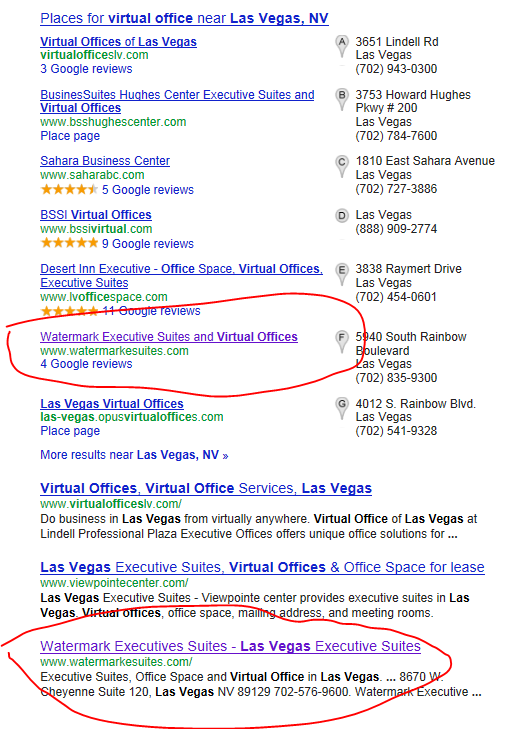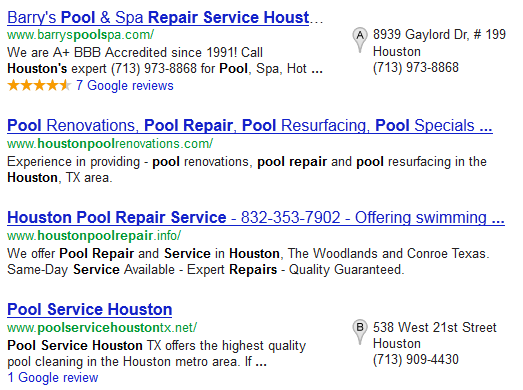|
Author's Note: I wrote this article more than a month before Google announced it's largely overlooked and not-talked-about venice update on 2/27/12. I had been observing and predicting since June of 2011 that with regard to local search, Google was clearly headed in the direction of scrapping the effort to create a unique local search engine (which started with Google maps) and start relying more heavily, if not entirely, on what they'd always done best - indexing and ranking websites. The Venice update was met with such silence in the SEO world that I myself had not even heard or noticed that it had a name until very recently. So, enjoy this one SEO's retro-post. -TJM It was in late 2010 that Google introduced "Google Places" as a new search option distinct from organic and maps. This change was accompanied by the famed "blended result" - a combination of organic and maps results - that shook up the entire SEO world. I am proud to have been maybe one of the first people to have witnessed the change in real time, late one afternoon while working, while at least one colleague thought I was crazy describing it, until he was finally able to get the same new results himself about an hour later. Up to this point there was a very clear distinction between local and organic in the results pages, and also a clear distinction in what was needed to rank well for either. For the most part ranking factors were independent, with the only exception being that a high quality website with mature SEO did seem to hold some influence on local listing rank. e.g. if all the other factors were the same between two local listings, the one with the better website would rank higher. That all changed with the "blended" result and there was good and bad news for both organic and local. The bad news for organic - and part of what put the traditional SEO world in a frenzy - was that being the top organic result only meant you were now at the bottom 1/3 of the page, and in some instances, pushed all the way down to the 2nd page. The good news for local: sudden appearing dominance and validation for all those crazy local SEOs ("See we told you it was important!"). The good news for organic (as would later become apparent): you could get in those top results again if you just got yourself an optimized place page with the right local "hooks" between the website and the places page. The bad news for local: without a well optimized website with organic rank, place page alone could only ever get you as high number 6 or 7. There was definitely more good and bad news on both sides of the aisle, but this is sufficient to demonstrate both the dizzying array of factors that have to be taken into account for complete SEO these days and also why we have to stay on top of the ever continuing changes. Following upon that idea, the local/organic, blended/traditional, website/place page dichotomy has changed or been adjusted numerous times throughout the last year. It is clear, for example, and well recognized among local SEOs, that from the beginning Google would sometimes show traditional results and sometimes show blended results, with it difficult to near impossible to figure out the rhyme or reason behind the differences. In my view, Google also seems to have offered change-ups between the two different results on the same searches over different periods. (For example, one month it has been all blended . . . the next month, all traditional.) I've always read this as purposeful and perhaps as an attempt to continually offer varied top results. Another adjustment has been Google offering organic-only local website results above or within local blended local results. Generally speaking, however, in all of this, organic website optimization factors have held an increasingly important sway in ranking locally. With all the problems plaguing Google Places both practically and systemically, it makes sense that Google would begin to veer back to what it has always done best - indexing and ranking websites - to reduce the problems and give better results. This latest development though, is an interesting turn. The Latest Adjustment - Website Data Dominates LocallyThat latest adjustment is a throw back to the days of traditional local listings in traditional search results being somewhat influenced by their associated websites. Only it's no longer somewhat, now the influence is 80-90%.
I noticed this checking in on clients around the US who formerly had weak results in certain searches when traditional results were shown, but strong rank when blended results were shown. Suddenly, they had the same strong local rank even though a traditional result was being shown. This biggest example indicating a change, however, was one client in particular who's Google places page had been optimized for some time - including both on-page and off-page factors - but who's website was new and only beginning to be developed. This client's business falls into about five or six distinct categories, at least four of which are available as choices in the Google places API, and the rest of which are available in off-page directories and as custom categories or keywords. The new website, however, only provides significant content for one. To get the website started I only focused on their most profitable category, expecting to develop the rest over time. The result of this? As the new website as grown more thoroughly indexed and recognized by Google - and naturally under that single category - the Google places page suddenly dropped 3 pages in rank in every search related to categories not present on the website, while its rank increased a couple spots in searches related to the category I had initially focused on. What this tells me: if you have "Office Space Rental Agency" optimized both on page and off page in Google places, but don't have matching or supporting content on the associated website . . . . Google isn't going to be giving much weight to that category. Once again this indicated to me that Google is seeking to rely on what it has always done best - indexing and ranking information from websites. Whether this will stick or if this will change remains to be seen. But for now at least the indication is ever increasing importance for the content on the website and traditional SEO. Luckily, I will be able to test this theory in the coming days and weeks. As I develop optimized website content for this clients other remaining categories . . . we'll see if the rank increases again . . . (and hopefully back to where it was!). Author's Follow Up: As predicted over the coming months I was able to test my theory and it worked to a tee. So theory confirmed. If you want to rank locally, your website must directly support the effort.
2 Comments
Leave a Reply. |
Timothy J Melody
Archives
March 2015
Categories
All
|




 RSS Feed
RSS Feed
